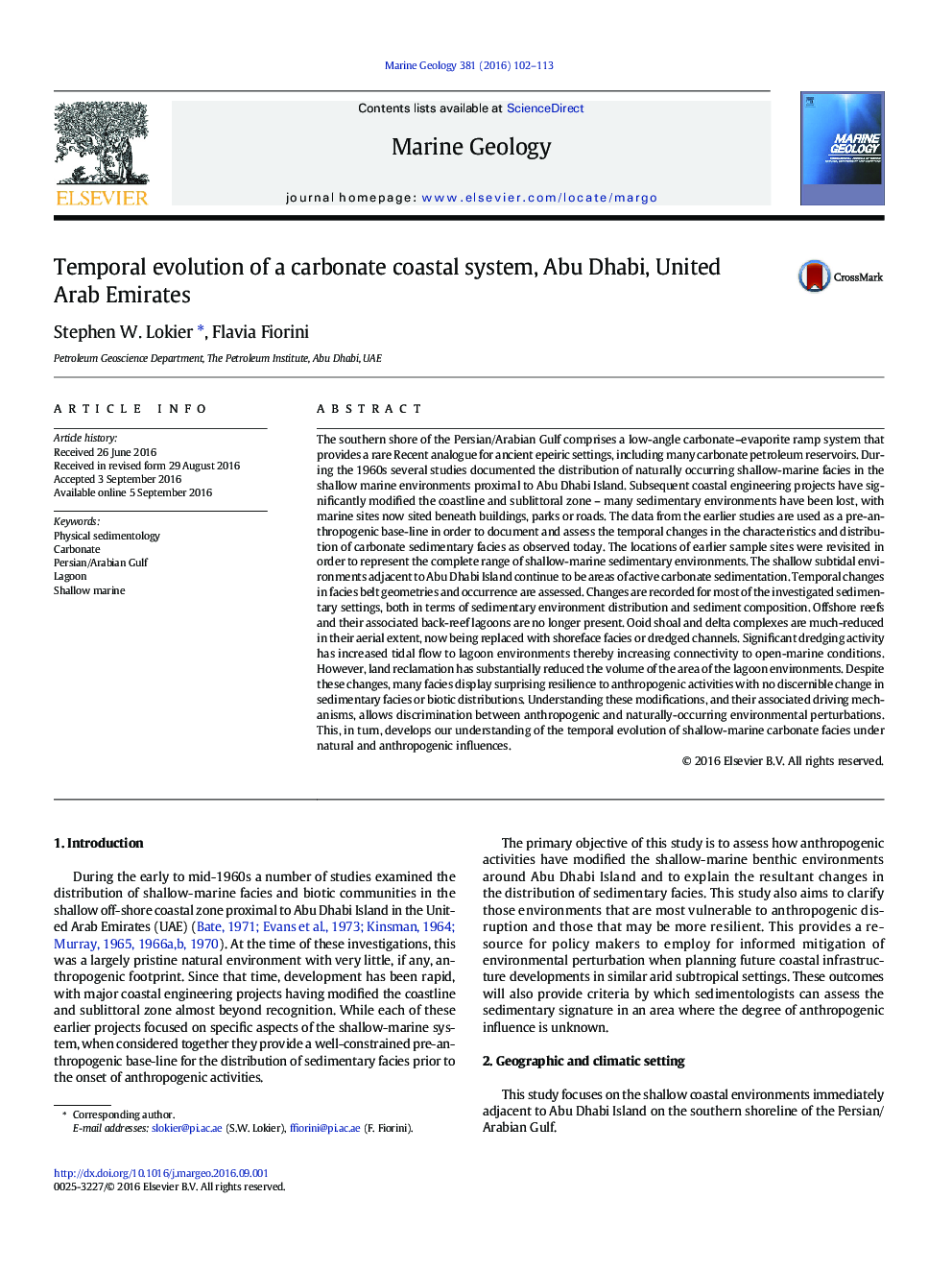| Article ID | Journal | Published Year | Pages | File Type |
|---|---|---|---|---|
| 6441263 | Marine Geology | 2016 | 12 Pages |
â¢Quantitative analysis of shallow marine sediments of the Abu Dhabi coastlineâ¢Documents anthropogenic control on evolution of shallow marine carbonate faciesâ¢Establishes relationships between geomorphic setting and sediment characteristicsâ¢Provides base-line data for the interpretation of ancient carbonate ramp systems
The southern shore of the Persian/Arabian Gulf comprises a low-angle carbonate-evaporite ramp system that provides a rare Recent analogue for ancient epeiric settings, including many carbonate petroleum reservoirs. During the 1960s several studies documented the distribution of naturally occurring shallow-marine facies in the shallow marine environments proximal to Abu Dhabi Island. Subsequent coastal engineering projects have significantly modified the coastline and sublittoral zone - many sedimentary environments have been lost, with marine sites now sited beneath buildings, parks or roads. The data from the earlier studies are used as a pre-anthropogenic base-line in order to document and assess the temporal changes in the characteristics and distribution of carbonate sedimentary facies as observed today. The locations of earlier sample sites were revisited in order to represent the complete range of shallow-marine sedimentary environments. The shallow subtidal environments adjacent to Abu Dhabi Island continue to be areas of active carbonate sedimentation. Temporal changes in facies belt geometries and occurrence are assessed. Changes are recorded for most of the investigated sedimentary settings, both in terms of sedimentary environment distribution and sediment composition. Offshore reefs and their associated back-reef lagoons are no longer present. Ooid shoal and delta complexes are much-reduced in their aerial extent, now being replaced with shoreface facies or dredged channels. Significant dredging activity has increased tidal flow to lagoon environments thereby increasing connectivity to open-marine conditions. However, land reclamation has substantially reduced the volume of the area of the lagoon environments. Despite these changes, many facies display surprising resilience to anthropogenic activities with no discernible change in sedimentary facies or biotic distributions. Understanding these modifications, and their associated driving mechanisms, allows discrimination between anthropogenic and naturally-occurring environmental perturbations. This, in turn, develops our understanding of the temporal evolution of shallow-marine carbonate facies under natural and anthropogenic influences.
